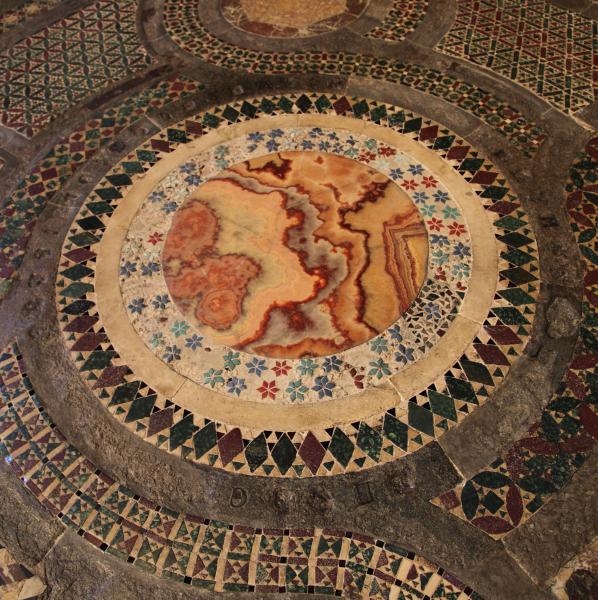What's Going On at MEMS?
Dear Friends,
MEMS continues to sponsor the Premodern Colloquium (meets Sunday afternoons once a month) as well as occasional MEMS Lectures.
We hope you will join us, and watch the website calendar of events for upcoming lectures and other activities of interest!
The Premodern Colloquium. Gothic Art, Realism and Genre: Thoughts on Eric Auerbach
Paul Binski, University of Cambridge

Sunday, March 28, 2021
2:00-4:00 PM
Virtual
This Zoom session of the Premodern Colloquium will run at 2:00PM to accommodate time differences.
This paper poses questions about the hierarchies and genres implicit or explicit in present day writing about Gothic art and architecture. A useful starting point is Eric Auerbach's work on mimesis and realism. Auerbach's brilliant literary insights into sermo humilis and the Judeo-Christian rejection of the ancient orders and hierarchies of rhetoric raise important objections. The first is that complex works of literature and art can seldom be pinned down just to one rhetorical mode or level of style. Rhetoric was not a single philosophy or body of knowledge to be adopted or repudiated, but a set of practices that varied ad usum, according to need and occasion.
Here I propose that the medieval Christian dispensation adhered to all the genera dicendi and rhetorical modes, and this opinion is tested with particular regard to epideictic or 'display' rhetoric and its relationship to 'realism'. It was Roland Barthes who noted that the 'reality effect' stemmed in part from epideisis or 'beautiful description'. This seems to offer an alternative route to realism (in so far as we can think causally about this matter) to the frank low speech often identified as sermo humilis. Praise and great speech are also discussed here with a view to understanding the ways that, morally and metaphysically, the canonical monuments of realism in Gothic Europe aimed not to diminish their subjects through naked displays of power, but to involve them in a rhetorical discourse of magnification whose aims were fundamentally political and social.
Finally, how can we recapture the great speech of medieval art without taking recourse to post-medieval notions of the Sublime? And to what extent can such great speech be theorized historically?
This paper poses questions about the hierarchies and genres implicit or explicit in present day writing about Gothic art and architecture. A useful starting point is Eric Auerbach's work on mimesis and realism. Auerbach's brilliant literary insights into sermo humilis and the Judeo-Christian rejection of the ancient orders and hierarchies of rhetoric raise important objections. The first is that complex works of literature and art can seldom be pinned down just to one rhetorical mode or level of style. Rhetoric was not a single philosophy or body of knowledge to be adopted or repudiated, but a set of practices that varied ad usum, according to need and occasion.
Here I propose that the medieval Christian dispensation adhered to all the genera dicendi and rhetorical modes, and this opinion is tested with particular regard to epideictic or 'display' rhetoric and its relationship to 'realism'. It was Roland Barthes who noted that the 'reality effect' stemmed in part from epideisis or 'beautiful description'. This seems to offer an alternative route to realism (in so far as we can think causally about this matter) to the frank low speech often identified as sermo humilis. Praise and great speech are also discussed here with a view to understanding the ways that, morally and metaphysically, the canonical monuments of realism in Gothic Europe aimed not to diminish their subjects through naked displays of power, but to involve them in a rhetorical discourse of magnification whose aims were fundamentally political and social.
Finally, how can we recapture the great speech of medieval art without taking recourse to post-medieval notions of the Sublime? And to what extent can such great speech be theorized historically?
| Building: | Off Campus Location |
|---|---|
| Location: | Virtual |
| Event Type: | Workshop / Seminar |
| Tags: | Architecture, Art, Art History, Europe, Scholarship |
| Source: | Happening @ Michigan from Medieval and Early Modern Studies (MEMS) |

